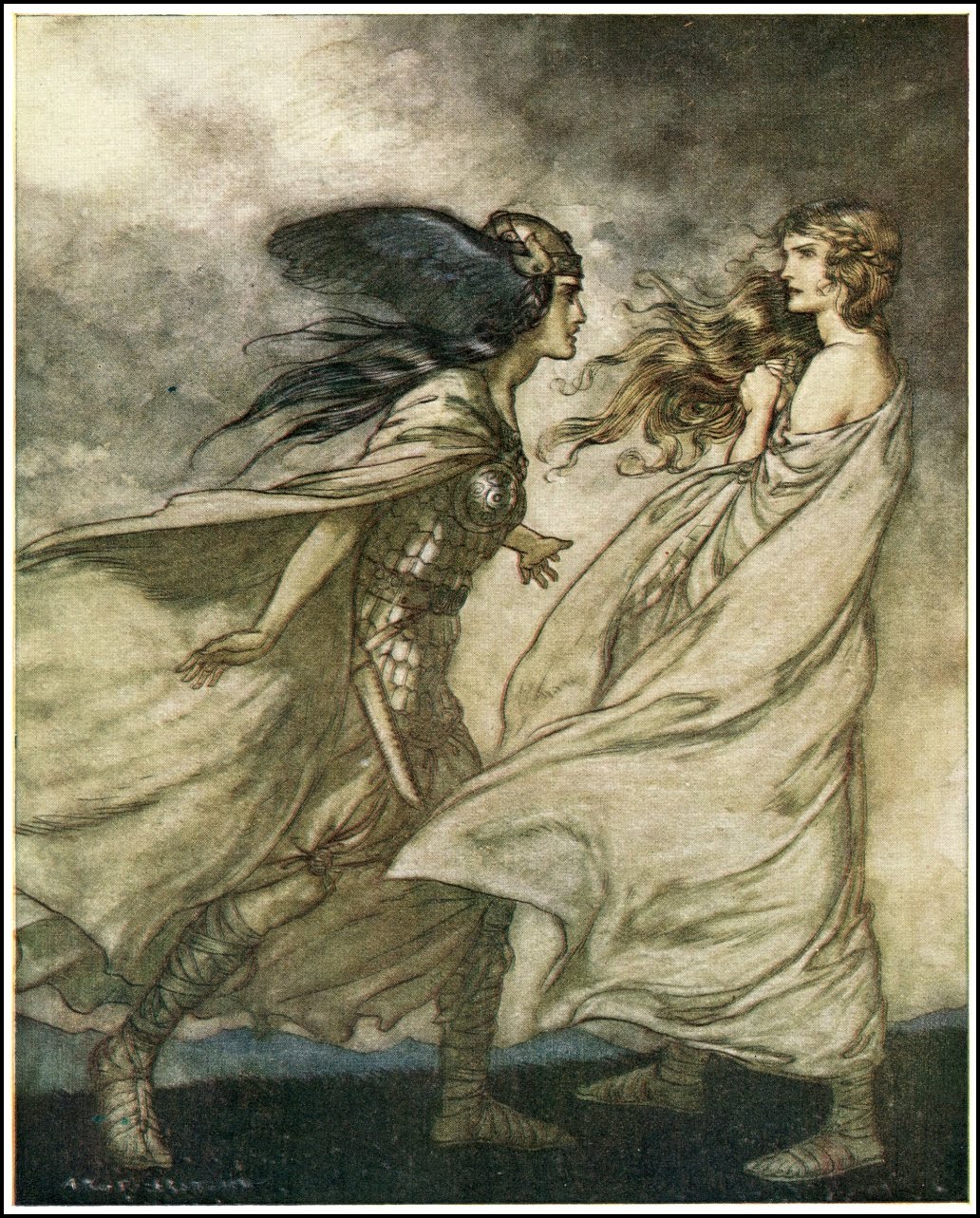Solfager og Ormekongen (Sunfair and the Dragon King) is a very old Norwegian ballad, which became popular in the musical arrangement by Edvard Grieg (Norwegian Dances and Songs, op 17 -1870), a kilomentric ballad in an archaic Norwegian translated into English by Christopher Norman [Ragnar Christophersen](in Norway Sings – A Collection of Norwegian Folk Songs, Norsk Musikkforlag, 1940). The ballad is widespread in Sweden under the title Jungfru Solfager.
The ballad is part of a chivalrous genre that portrays the medieval nobility by showing its drives and dramas; they are mostly tragic love songs, but also they talk about murky passions and domestic violence, infidelity and passional crimes.
The plot is as follows: King David leaves his betrothed Sunfair to travel abroad. While he is away his brother Ormekongen (the Dragon King), tries to seduce Sunfair. She resists and the Dragon King gives her a potion to make her lose consciousness. He then buries her apparently dead body, but later steals her secretly from the grave and leaves the country with her. King David follows disguised as a pilgrim. He reveals himself to Sunfair and brings her back home again. (from here)
Jean-Luc Lenoir from “Old Celtic & Nordic Ballads” 2012 (Joanne McIver voice) ♪
The King of the Dragons (1) came
a riding on his mare,
And the maiden was so young.
Sunfair stood waiting
and sunned her golden hair.
I love to ride out in the meadows.
II
And do you hear, my Sunfair,
what I order thee?
Thou’lt leave King David
and be betrothed to me.
III
Never shall it come to pass
while I do live,
That I two brothers
should my pledge give.
IV
Three magic potions in her cup
he went and poured;
Sunfair drank and swoon’d
without a word.
V
To King David came the message
sinister and dread!
Sunfair, your love,
your sweetheart, is dead!
NOTES
1) In knightly ballads all knights are identified with symbols that characterize their good or bad nature, in general marked by colors (Green Knight, Red Knight, Black Knight) but here the evil one is the king’s brother: “ormr” in Old Norse means “snake”, a legendary serpentiform creature symbol of war and pestilence, a dragon-snake able to take human form, and yet in this context the dragon king is probably a name that indicates his ruthlessness and resoluteness in the battle. The term dragon for an armed infantry unit armed with arquebus (sputafuoco) dates back to the fifteenth century
Solfager and the Snake King, Op. 17 No. 12 (Edvard Grieg)
LINK
http://tredwellsmusic.com/norway-sings-a-collection-of-norwegian-folk-music-songbook-sheet-music-out-of-print
http://www.visearkivet.no/pdf_filer/diverse_artikler/english/all_for_his_maiden_fair.pdf
http://www.bokselskap.no/boker/fagartiklarogtittelregister/espeland2
https://wunderkammern.wordpress.com/2012/10/18/le-ballate-norvegesi-i/
http://www.listento.no/mic.nsf/doc/art2002092015093372007782

